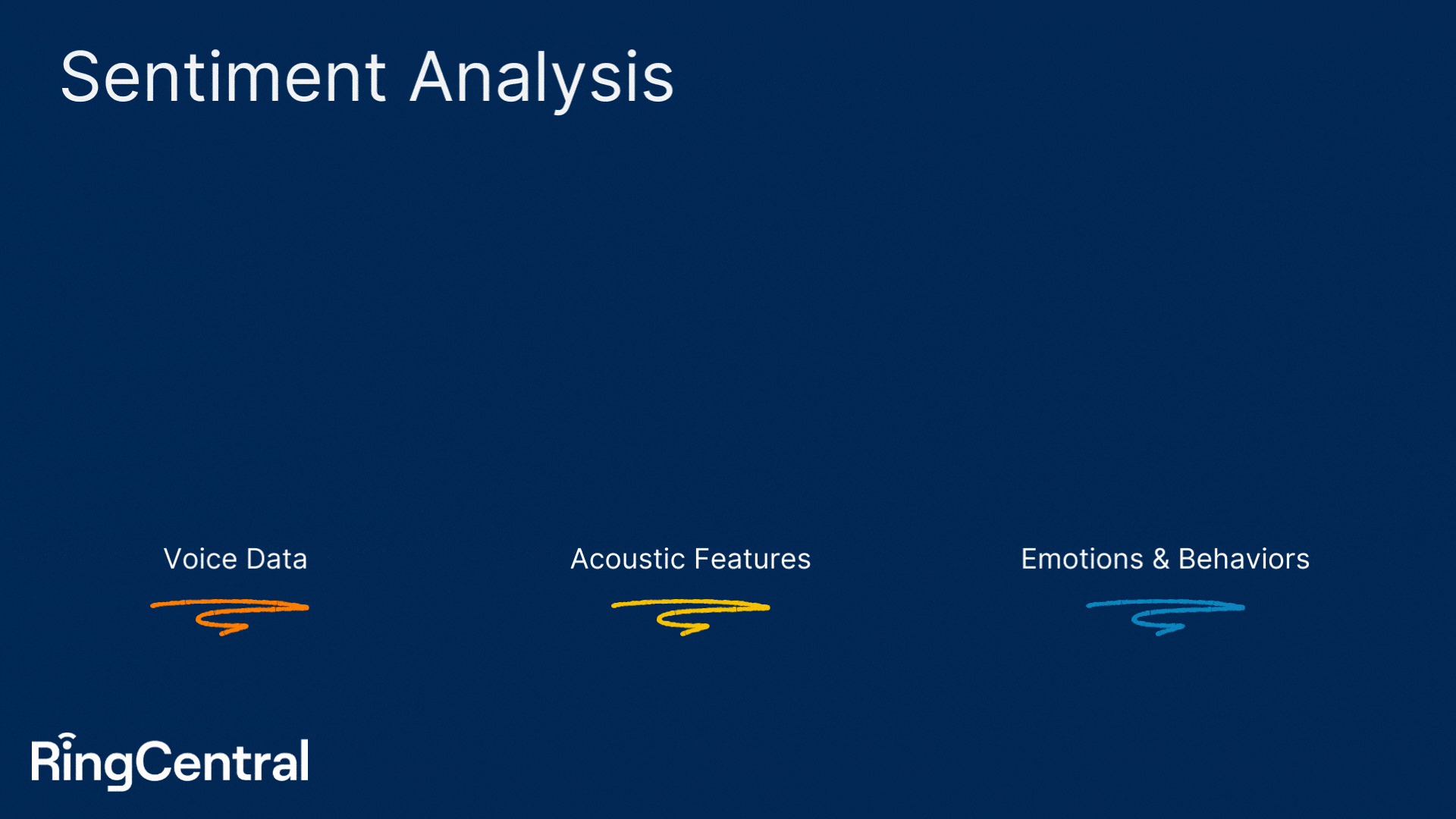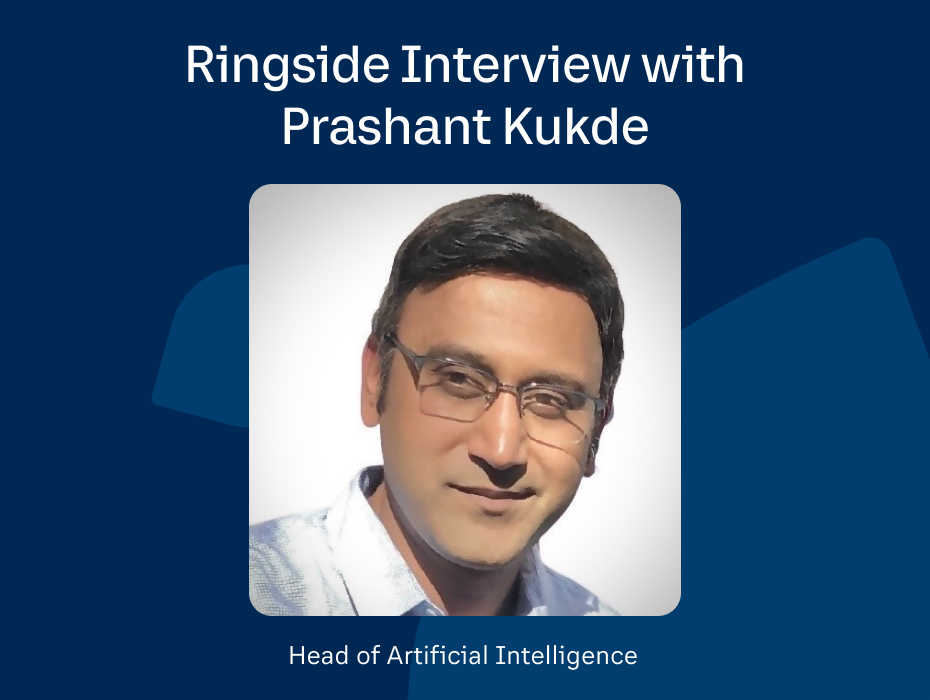You’d be hard-pressed to read the news today and not find an article on conversational AI or generative AI. It’s a trend that has led many business leaders to wonder: How can I use this emerging technology at my company to get faster and more efficient?
In the two-plus years since Prashant Kukde joined RingCentral, he’s spearheaded the launch of various industry-leading AI innovations in business communications. We first met Kukde when RingCentral acquired DeepAffects, his startup, in December 2020. A conversation intelligence pioneer, DeepAffects applied artificial intelligence (AI) to analyze business conversations and extract meaningful insights across all modes of communication. Under Kukde’s leadership, RingCentral has rolled out a series of industry firsts in areas such as AI-generated video meeting summaries, video reel highlights (think ESPN), multi-speaker recognition, multi-modal emotion recognition, speech recognition with accent detection, sentiment analysis, background noise reduction and more.
Prashant joined me on RingCentral’s video platform to discuss why he came to RingCentral and how he believes AI will transform business communications this decade.
Why did you start your AI company DeepAffects and sell it to RingCentral specifically?
My first startup, co-founded in 2013, focused on the application of AI in healthcare. The objective was to examine patient history to predict whether they were at risk for chronic conditions such as diabetes or hypertension. That was a successful implementation of my first attempt at using AI to solve real-world problems.
Toward 2017, I began to notice we had very fragmented data, and many conditions that the patient typically develops were unrelated — you could not always see those signs before they occurred. We discovered psychological issues that became physiological problems. But psychological issues are tough to diagnose, as there are usually no visible symptoms to the naked eye. The common technique doctors have to analyze these issues is by asking questions in a conversation with the patient. That interested me in the voice space.
How do you analyze voice conversations using AI?
This question inspired the birth of my second startup in 2017, DeepAffects, which focused on the application of AI in voice. Our mission was to solve for the gap of extracting insights across live conversations and human interactions or unstructured data.
I sold DeepAffects to RingCentral just after COVID began. With the rapid emergence of remote collaboration technologies like video meetings and digital whiteboards, among others, voice became a critical connector for business growth and team collaboration. I had a few offers to buy my startup, but I deliberately partnered with RingCentral to bring my AI work to market because I saw the breadth of our communication products — and the opportunity of working with raw, unstructured communication data. Joining RingCentral was a unique opportunity to apply AI innovation to the full spectrum of business communications.
DeepAffects made strides in multi-modal emotion recognition, multi-speaker recognition and voiceprints, and speech recognition with accent detection. How do you see those technologies advancing in the near or long term?
Emotional recognition is an interesting problem. I always say emotion is the only universal language. Every language will have different words and things, but at the end of the day, if you dig deep, it’s all coming from an emotion. There are about 24 emotions, depending upon who you talk to, and within the next ten years, we’ll get down to the emotional part of AI because that’s what makes us human.
The recognition model we built was a combination of the context in the conversation plus an analysis of how you say things – like the pitch, the tone, and how fast you speak.
There’s a lot of work that needs to happen before humans accept the presence of AI. We must remember that AI is still learning; it’s not to the point where it truly understands human emotions yet.

Where do you see AI playing a role in cloud communications?
Author Yuval Noah Harari breaks down why conversation insights are critical to human existence. In Sapiens, Harari explores what makes humans unique vs. all other species. Why did we rise above the rest, as we aren’t the strongest physically of all species? He concludes the secret of our success is large-scale communication and cooperation. Thus, conversation insights that drive collaboration are at the heart of all human progress.
Let’s take it to the business world now. Humans work together to solve problems through communication. You’re either facilitating conversations between employees or between employees and customers. The problem you are solving could be generating revenue faster or optimizing workflows. How do you focus simultaneously on saving money and improving the customer experience? How can I close more deals in our sales conversations? AI has already been applied in the contact center space, but many problems still need to be solved. There’s a new generation and a way to solve those problems effectively. We’ll see increasing demand for AI, especially as more meetings, customer service, and telehealth visits are happening in the cloud.
AI is also helpful in facilitating human-to-machine conversation — for example, restaurant or airline bookings or a login password reset. The better the language model, the more AI can help save customers time and time for human agents in contact centers. The other part is vision, which is how the customer experience will improve. Today, somebody calls in, and they are asking questions, and a lot of times, the agent is focusing on trying to find the correct information and the next steps. It takes time. With vision, AI will help find the correct answers, and the conversation focuses on helping the customer understand the next steps. The AI can write the call disposition for the agent and save it into the CRM or ticketing system.
What excites you about the work you’ve done since joining RingCentral?
AI-powered translations are making great strides. Today, I can see the transcript converted into English if my meeting is hosted in German, Italian, and other languages. But it must improve. We are applying powerful neural network models to improve accent-aware speech recognition. The goal is to transcribe a non-native English speaker’s audio with very high accuracy. We’re perhaps a year away from seeing this technology improve the quality of conversations and the experience of real-time multilingual meetings.
I’m also optimistic about applying AI to RingCentral data. There is a deep reservoir of customer conversation data, and it’s untapped for the insights we can glean to make meaningful decisions. AI applied to CRM depends on manual CRM rep hygiene, which we all know is far from comprehensive. Many of us have access to manual notes inputted into CRM, and we seek to close the gap between extracting insights across conversations and human interactions or unstructured data. Lastly, I’m very proud of our speed. We were the first to launch AI-powered conversation intelligence in 2022 before anyone else. We’re also the only vendor committing to democratizing access to conversation intelligence, making it accessible to RingCentral freemium users and paid.
What should every CIO think about as they develop their AI roadmaps, investments, and communication strategies?
Customer experience and employee productivity are the two areas every CIO and CEO thinks about. When you leverage added intelligence, your productivity will improve significantly. In the past, CIOs may have measured customer experience with surveys. With AI, CIOs can now monitor every single customer engagement in minutes. Feedback becomes a continuous loop. And you can push that feedback back into your organization in real-time or near real-time. With AI, CIOs can analyze communications 24-by-7-by-365 days and rethink their definition of productivity.
On productivity, you’ll see a new term emerge in the tech industry: Digital labor. Meaning non-human generated labor. It will be AI-powered, able to do human-like things, but it is automated. AI chatbots are an example of digital labor. CIOs will soon need to measure how much digital labor they are using to complement their human labor for optimal productivity. Doing more with less effort.
AI makes the possibilities endless for enabling deeper, more meaningful engagement, connection, thinking, and, ultimately, more successful communication.
Thanks, Prashant!
Originally published Mar 30, 2023
Looking For Startup Consultants ?
Call Pursho @ 0731-6725516
Telegram Group One Must Follow :
For Startups: https://t.me/daily_business_reads




